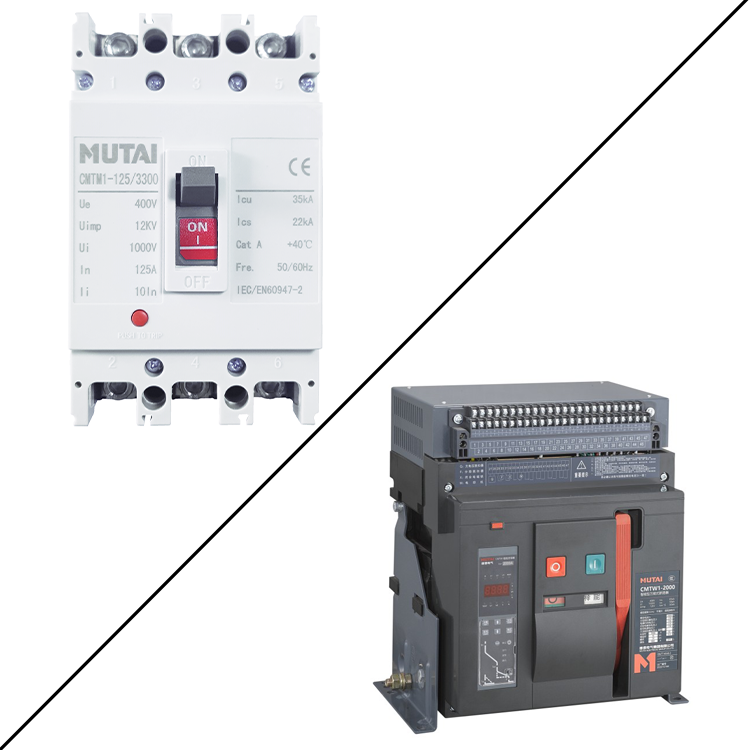Air circuit breaker (ACB) and molded case circuit breaker (MCCB) are two commonly used circuit protection devices in electrical systems. While both serve the basic function of protecting circuits from overloads, short circuits, and other faults, there are key differences between the two that make them suitable for different applications.
First, the sizes of ACB and MCCB are very different. ACBs are larger in size and volume and have current ratings ranging from 400A to 6300A. This makes them ideal for use in power distribution networks, where their task is to distribute electrical energy and protect lines and electrical equipment from various faults. MCCBs, on the other hand, are relatively small in size and volume and have current ratings ranging from 10A to 800A. They are commonly used to protect distribution lines and equipment from overloads, short circuits and undervoltages, and can also provide protection for motor starting operations.
Another important difference between ACB and MCCB is their protective function. The air circuit breaker intelligent tripper has multiple protection functions such as long delay protection, short delay protection, instantaneous protection, grounding protection, overvoltage protection, and phase loss protection. In addition to protection functions, ACB also provides measurement functions such as current measurement, voltage measurement, power measurement, and harmonic measurement, as well as auxiliary functions such as early warning, self-diagnosis, fault history recording, and test functions. In addition, the ACB is equipped with communication capabilities that allow seamless integration into the wider electrical system. In contrast, molded case circuit breakers mainly provide long-time protection, short-time protection (overload protection) and instantaneous protection (short-circuit protection).
The application scope of ACB and MCCB are also different. ACB is mainly used in large power distribution networks due to its high rated current capacity and wide range of protection functions. They play a vital role in ensuring reliable and safe operation of electrical systems by preventing various faults and anomalies. MCCBs, on the other hand, are used in commercial and industrial environments where the lower rated current capacity is sufficient to protect against overloads, short circuits, and undervoltages. They are commonly used to protect distribution lines and equipment and provide protection for motor starting operations.
To sum up, the differences between ACB and MCCB can be attributed to their size, protection functions and application scope. ACB is larger in size and can provide comprehensive protection and measurement functions and is suitable for use in power distribution networks, while MCCB is relatively small and can provide necessary protection functions for smaller distribution lines and equipment. Understanding these differences is critical to selecting the appropriate circuit protection device for a given electrical system, ensuring optimal performance and safety.
Post time: Dec-28-2023




